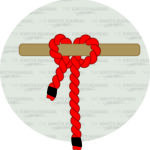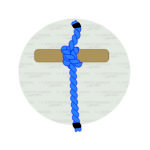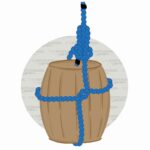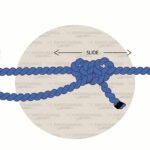A girth hitch knot uses a sling to attach an item to a harness. They are prevalent with rock climbers and are very safe when used correctly. Yet, they have disadvantages and can be unsafe if climbers don’t use them properly.
Girth hitch knots are almost identical to cow hitch knots; users often confuse them. These knots are similar to many other hitches, including the cleat and clove hitches.
Rock climbers most commonly use girth hitches. Still, fishers, hunters, and campers also use them.
Follow the simple directions below to learn how to tie a girth hitch knot.
What Is A Girth Hitch Knot?
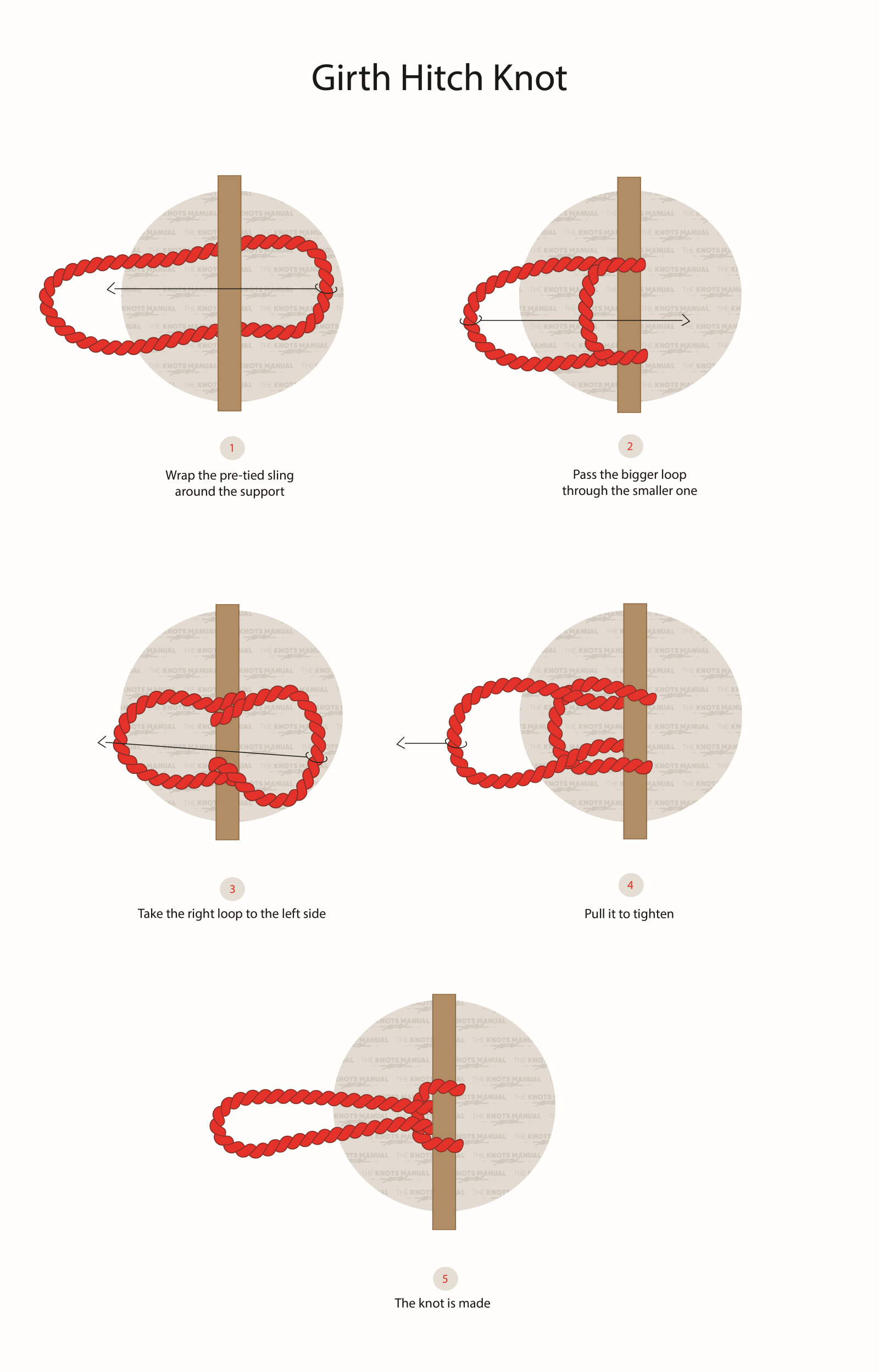
The girth hitch knot uses a webbing loop sling to attach items to a harness. The knot is usually used to connect a sling to a ring, bar, or another sling.
The advantage of girth hitches in climbing is that climbers don’t need an extra tether. The knot will not slip if one of the legs fails or gets cut.
Girth hitch knots reduce the strength of the rope considerably. They also cause a lot of damage to tree trunks because their contact points are narrow.
Girth hitch knots are reliable when used correctly but can be dangerous if misused.
Users sometimes refer to the girth hitch as the “Lark’s head,” “Lark’s foot,” and “lanyard hitch.” Yet, these terms do not belong to the girth hitch. Rather, they refer to the cow hitch. The cow and girth hitches are nearly identical. Users often confuse them and interchange their names.
Correct alternative names for this knot are the “strap knot” and “bale sling hitch.”
How To Tie A Girth Hitch Knot
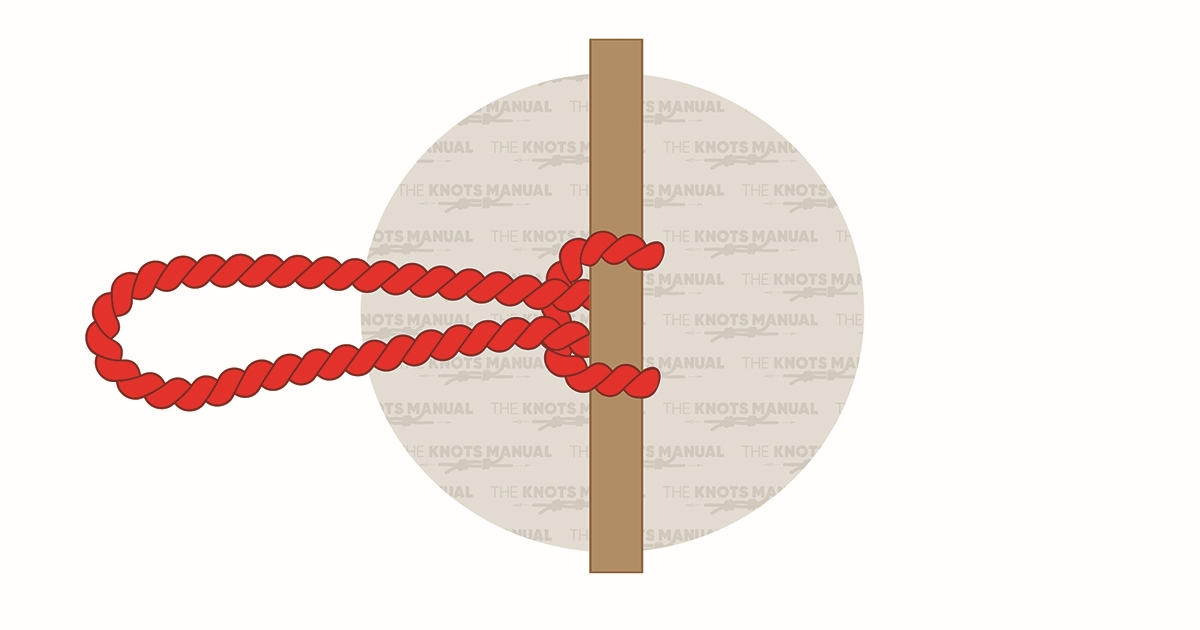
Follow these five directions to learn how to tie a girth hitch knot:
Step 1:
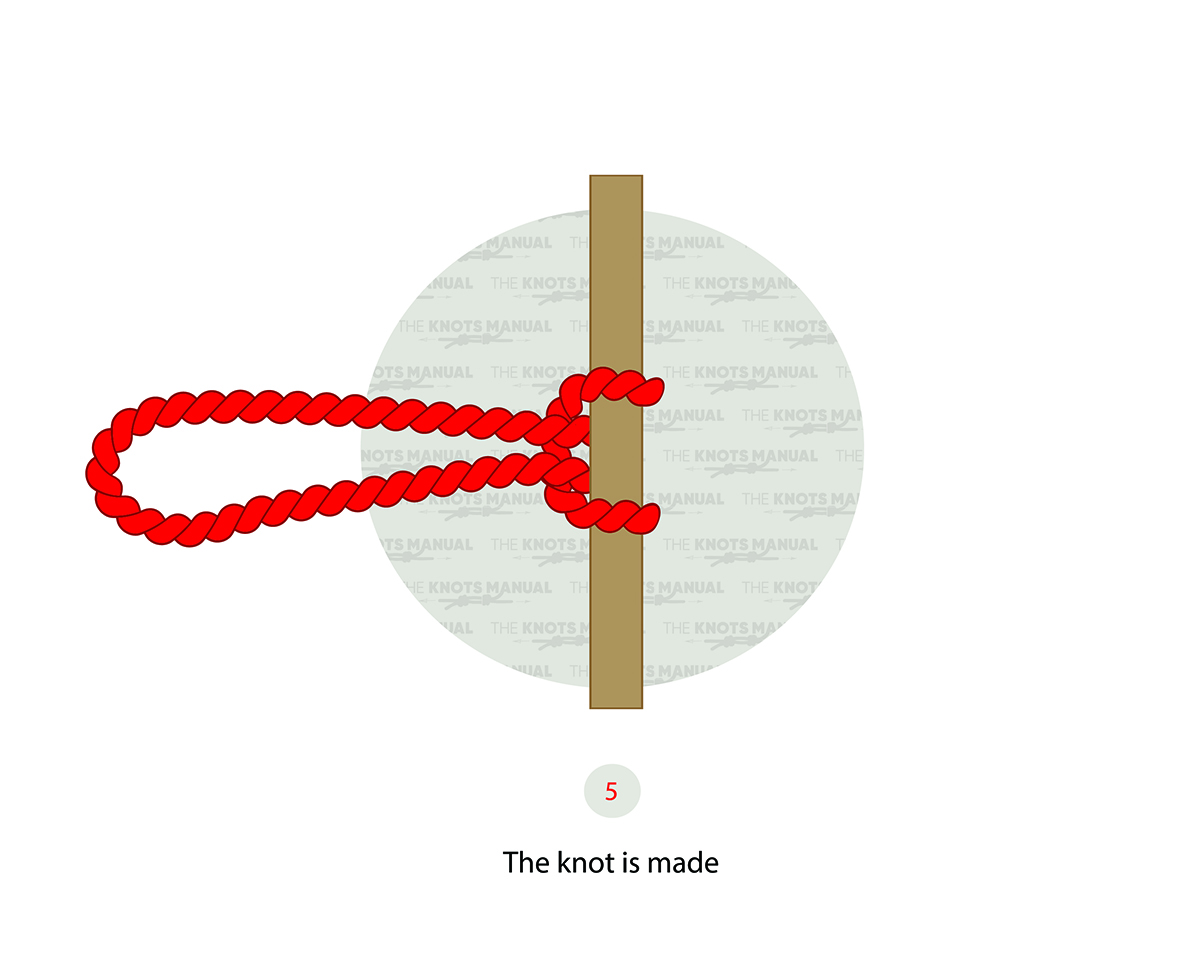
Wrap the pre-tied sling around the support structure.
Begin with a pre-tied sling.
Step 2:
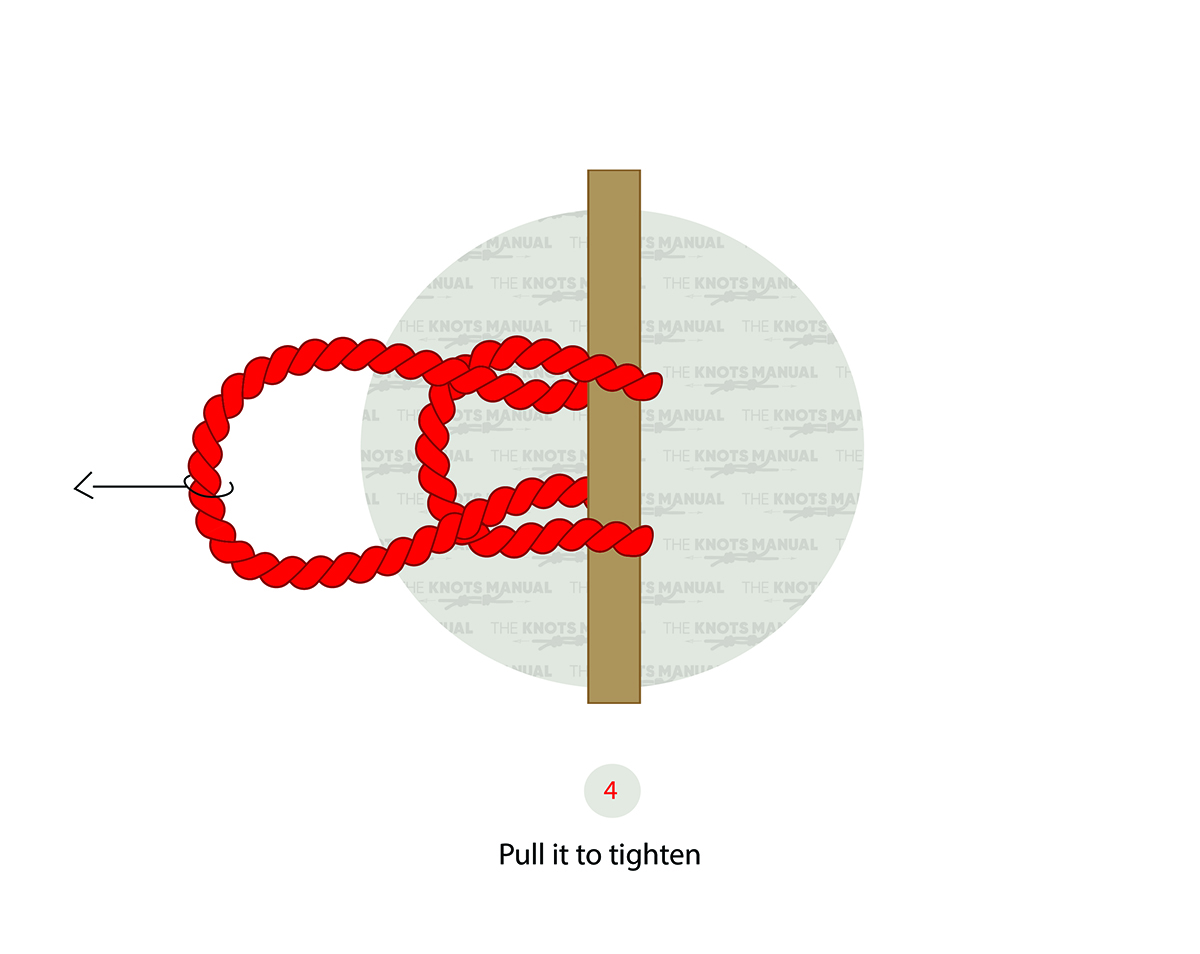
Pass the larger loop through the smaller one.
Step 3:
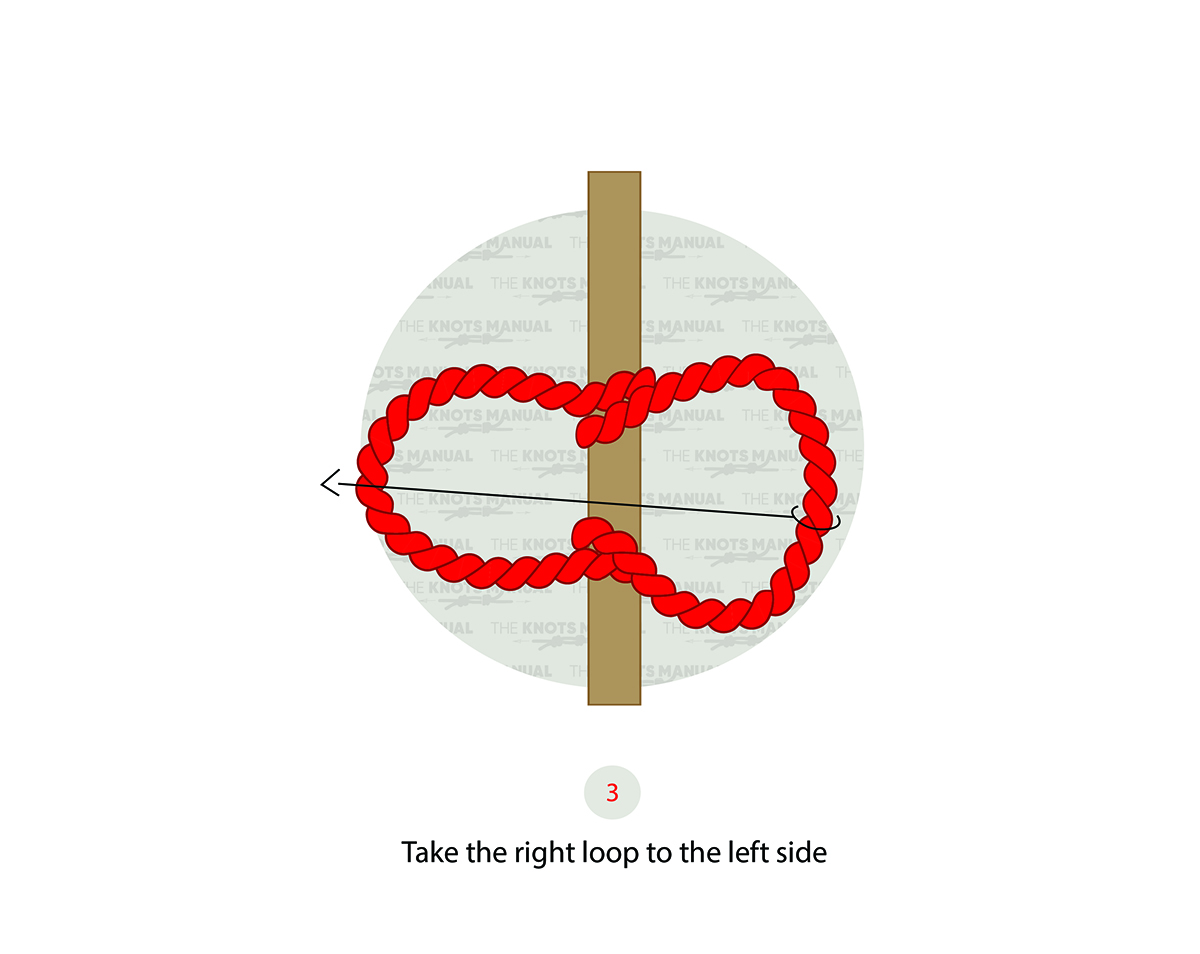
Move the right-hand loop to the left side, so it sits over the smaller loop.
Step 4:

Pull on the larger loop to tighten the knot.
Step 5:

The girth hitch knot is complete.
Uses Of The Girth Hitch Knot
Girth hitch knots can attach a harness to another sling, rope, or strap. They are often used to connect anchor points to a rope in a static position. Such use is most common in a top-rope set-up.
Rock Climbing, Mountaineering, and Canyoneering
Rock climbers and canyoners often use the girth hitch as an anchor. Using these knots as an anchor is safe as long as everything is clipped to the hanging loop and nowhere else.
Using a girth hitch with a carabiner to attach to the belay loop makes rappelling safer. The knot can also connect two slings or make daisy chains.
Do not use girth hitches to attach slings, bolts, or anchor systems to the belay loop on a harness. Doing so decreases the strength of the rope significantly. It causes significant wear and tear to climbing equipment.
Canyoneers often use a girth hitch in combination with a figure-8 knot.
Climbers should always inspect and test their knot before using it. They need to ensure the knot can support their weight.
Climbers should NEVER clip in from the side or back. Doing so can cause the knot to come undone when the climber applies weight to it. Misusing the girth hitch can be the difference between life and death.
Fishing
Fishers sometimes use the girth hitch as a temporary mooring sling. These help moor their boat to the dock. Girth hitches may act in place of double fisherman’s knots. They can fasten two pieces of rope to another.
Hunting
Hunters sometimes use the girth hitch knot to hang their meat or drag their gear through the woods.
Camping
Campers use girth hitches to attach hammocks to trees or to haul gear to their campsite.
Knots Similar To The Girth Hitch Knot
Cow Hitch: These knots work as temporary hitches. They attach a rope around a pole or similar cylindrical object. They get the name “cow” hitch because they are often used to secure cows and other animals. Cow hitches are not the most secure knots and are best for lighter loads. They look very similar to girth hitches. Cow hitches are sometimes used in archery to protect the bowstring from damage.
Bachmann Knot: These knots are friction hitches popular with climbers and arborists. Climbers must use a round cross-section carabiner to tie the knot as it adds friction.
Cleat Hitch: These knots are the best for tying a boat or ship to a dock. A line ties around a cleat, a metal, t-shaped object that attaches to the side of a boat. They are quick and easy to tie and untie, yet easy to miss-tie.
Knute Hitch: These knots attach lanyards to small objects like knives or marlinspikes. These knots usually comprise paracord or similar material.
Transom Knot: These are lashing knots that are often used for camping and other outdoor uses. They are used on crossed pieces of rigid material, fixing them together at right angles.
Basket Hitch: These knots are stronger than girth hitches.
Clove Hitch: These knots are very common among climbers. Climbers don’t need to use a sling when using a carabiner with their clove hitch. Climbers can adjust the carabiner without untying the knot.
FAQs
What Is The Difference Between A Knot, Hitch, & Bend?
Knots, hitches, and bends are technically different, though we tend to label them all as “knots.”
A true knot should be able to hold its proper form without the help of another object, like an eye-bolt, post, or rope. Knots join two ropes together or a rope to itself.
A hitch needs to be tied around an object to hold its figure. It will fall apart if you remove the item it is tied to. Hitches are often tied to things like poles or carabiners.
A bend is a type of knot that joins the ends of two ropes.
Is A Girth Hitch Strong?
The girth hitch is not very strong and weakens a sling. Two straps that are knotted directly onto each other are particularly weak. Girth hitches tied in the above mentioned manner weaken a sling by about 50%.
It’s better to use a carabiner than a girth hitch when strength is a concern. A carabiner can attach two slings as well as a girth hitch, yet it doesn’t weaken the sling.
It is possible to reduce the amount the knot weakens the slings. To do so, the two bands must be dressed to resemble a square knot. A girth hitch dressed in this manner is known as a “strop knot.”
